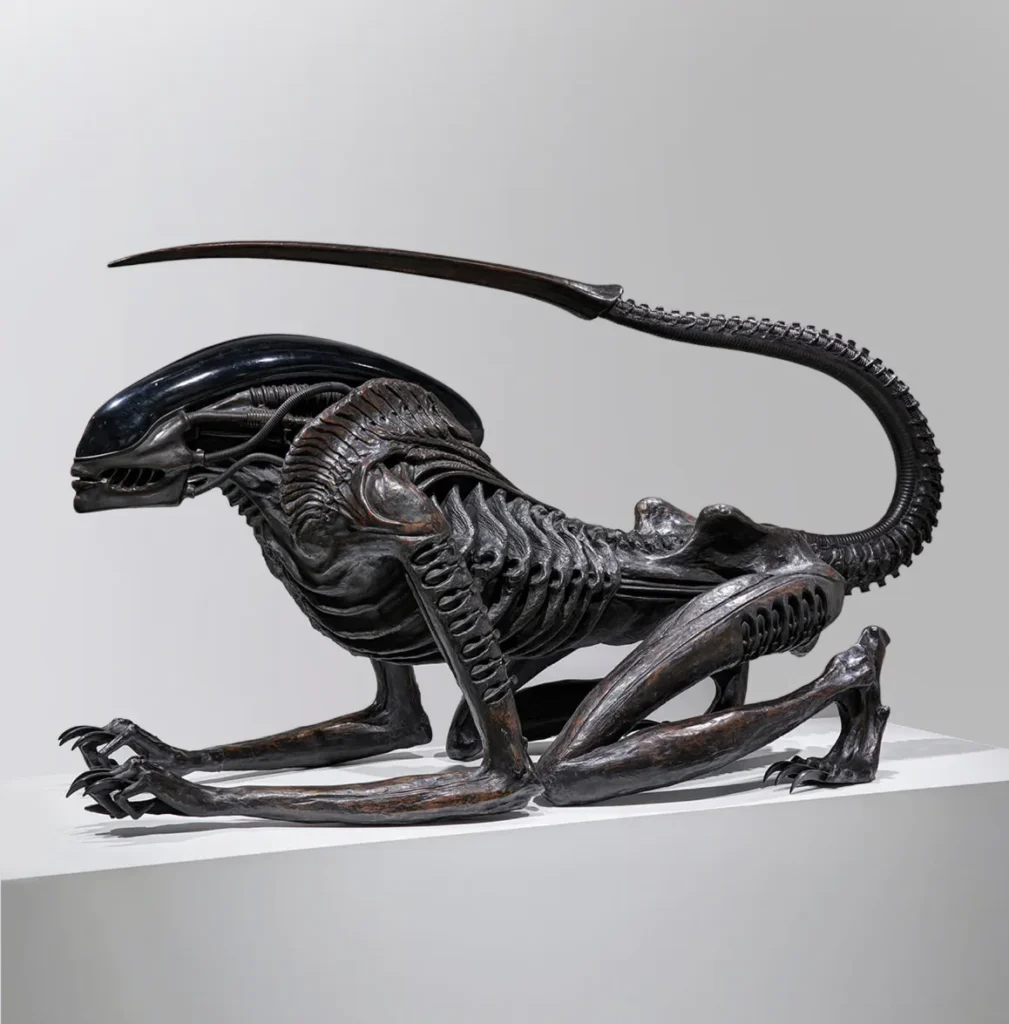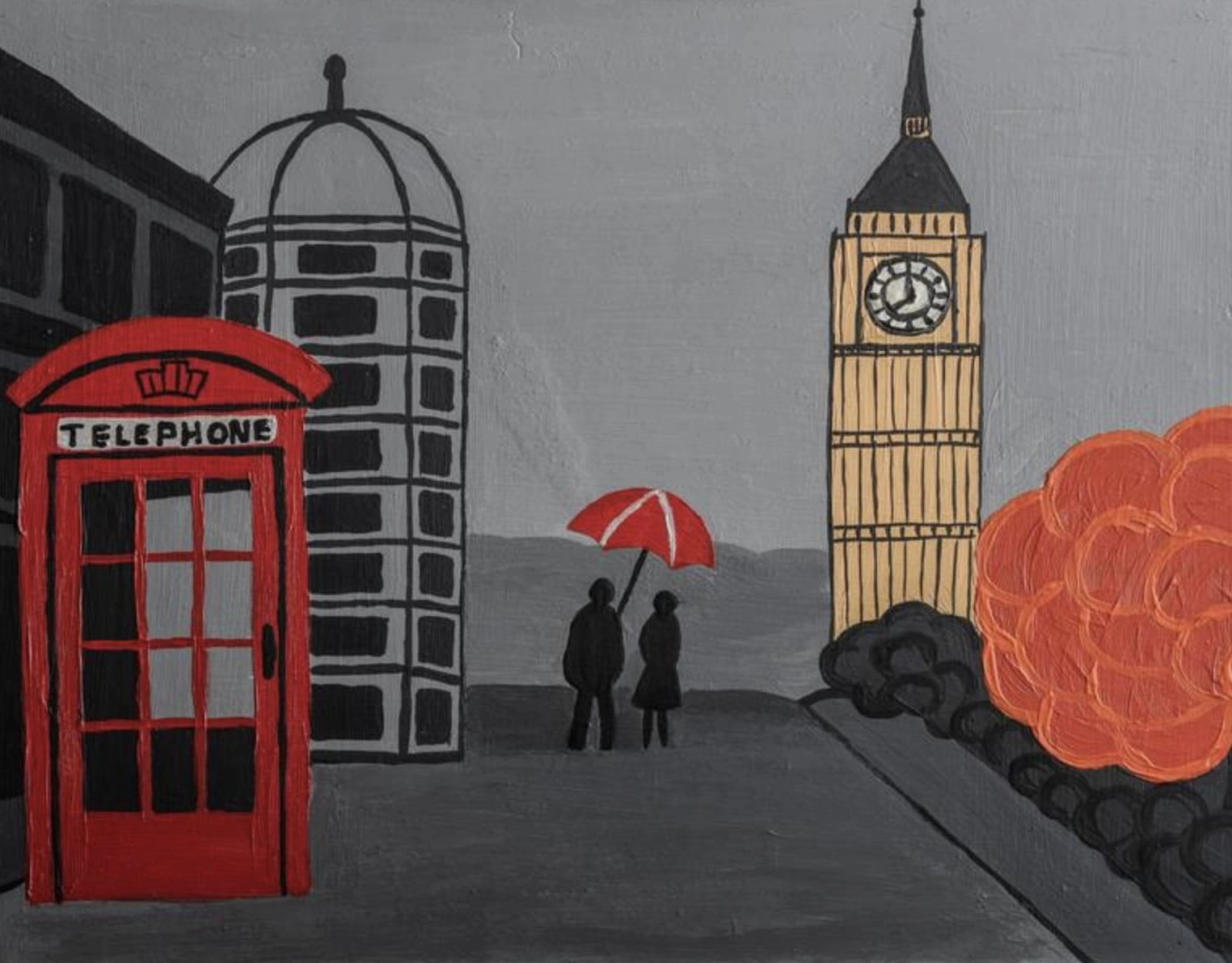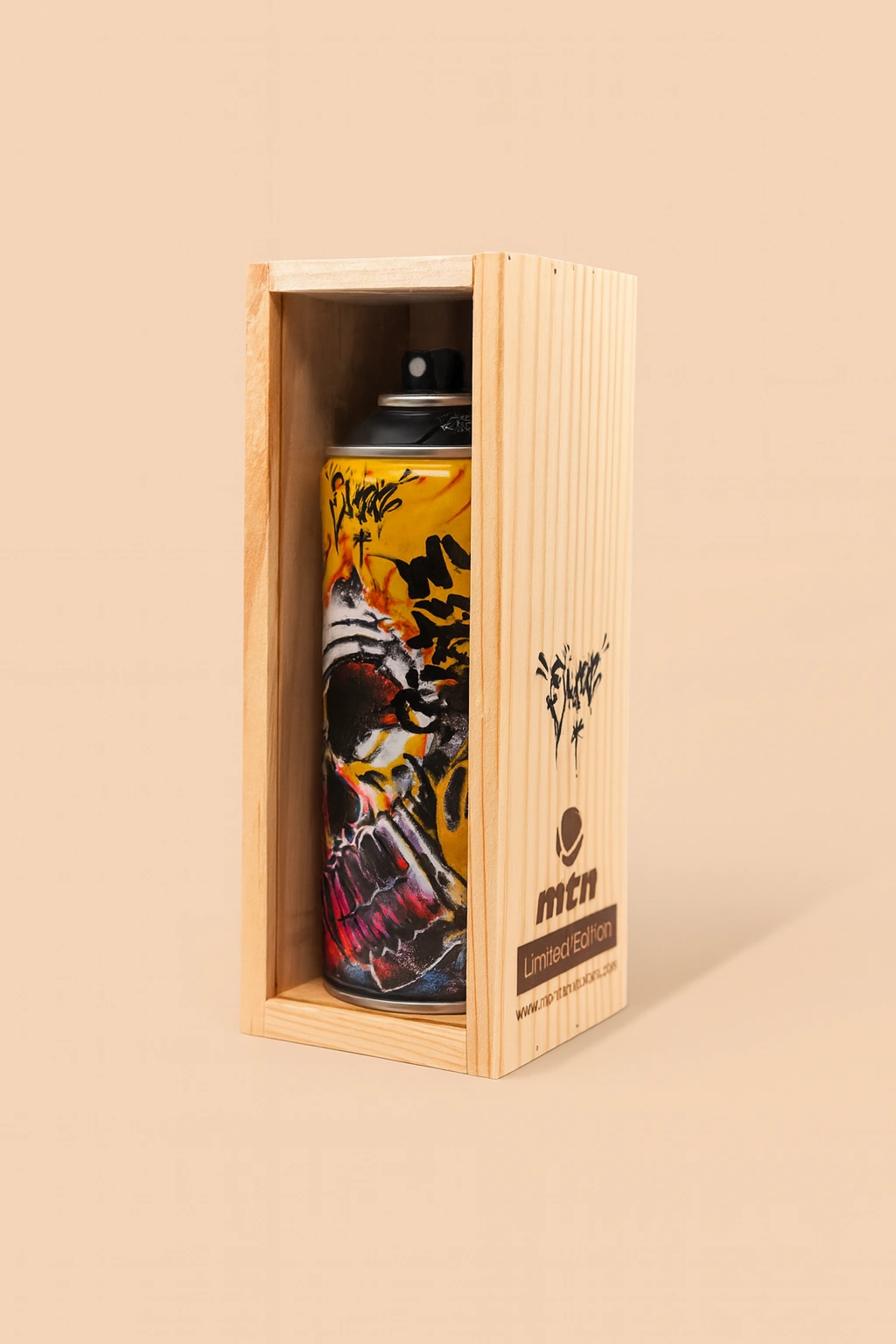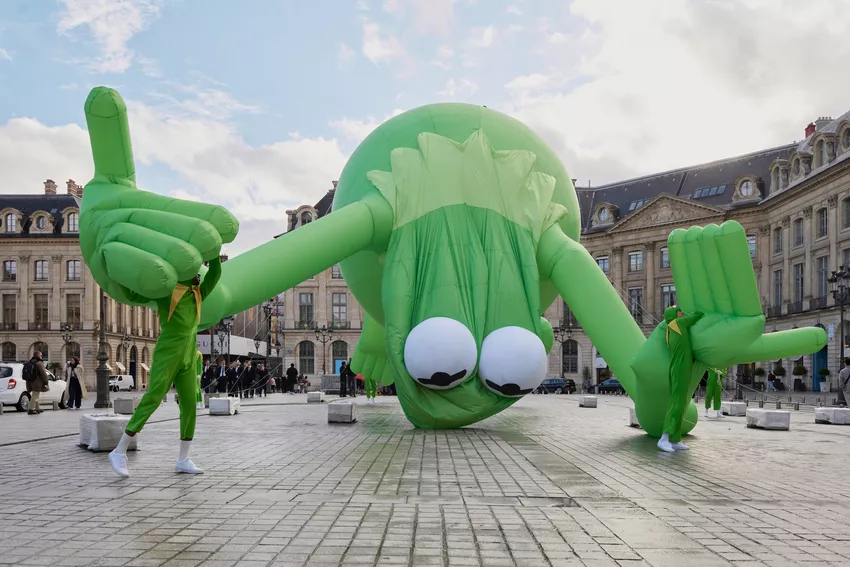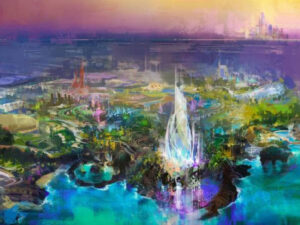intro
This autumn, Paris becomes host to one of the most hauntingly beautiful exhibitions of the year: H.R. Giger Paris, presented by Mai 36 Galerie in collaboration with Kaleidoscope magazine. Running through November 15, 2025, and coinciding with Art Basel Paris, the show brings together original works by the late Swiss artist Hans Ruedi Giger (1940–2014)—including a rare, life-size “Necronom” sculpture created for Alien III. In this darkly luminous setting, Giger’s art feels prophetic once again, echoing the anxieties of an age defined by AI, body augmentation, and environmental decay.
the artist
Giger’s name is inseparable from Ridley Scott’s Alien (1979), for which he designed the now-mythic Xenomorph creature. Yet before Hollywood, he was already cultivating a singular aesthetic: the biomechanical—a fusion of human anatomy and machine architecture rendered in meticulous airbrush gradients of bone, chrome, and shadow. His figures were never merely imagined monsters; they were self-portraits of the modern condition.
Born in Chur, Switzerland, Giger studied industrial design in Zürich before turning fully to painting in the 1960s. His early works, drawn from dreams and nightmares, merged flesh and mechanism, evoking post-war trauma and futuristic dread. What began as surrealist experiment evolved into a prophetic language of hybrid existence. His “biomechanoids” embodied the collapse between human and machine long before cyberpunk or AI ethics entered mainstream discourse.
from alien to artifact
In 1979, Alien catapulted Giger to global fame. Director Ridley Scott discovered his illustrated compendium Necronomicon and hired him to design the creature, sets, and environments. The result was a cinematic ecosystem unlike anything seen before—sexual, mechanical, terrifyingly organic. Giger won the Academy Award for Best Visual Effects, and the film cemented his visual grammar in popular culture.
The Paris exhibition foregrounds this cinematic connection through a centerpiece: a life-size “Necronom” sculpture from Alien III—a towering form of metal, resin, and darkness that seems to breathe within the gallery’s half-lit walls. More than nostalgia, the piece confronts viewers with the enduring potency of Giger’s imagination: art as apparatus of fear, beauty, and transcendence.
evolve
The exhibition traces Giger’s practice from his earliest airbrush paintings of the late 1960s to his monumental sculptures of the 1990s.
The early works—muted palettes, skeletal forms, contorted anatomies—reveal a fascination with transformation: machines as wombs, flesh as circuitry. These compositions anticipated the anxieties of an age not yet digital.
The mid-career period, encompassing Alien and its aftermath, expanded his imagery into design, furniture, and architecture. Giger’s Harkonnen Chair (originally for Jodorowsky’s unrealized Dune) and his Swiss Giger Barstransformed environments into inhabitable nightmares—cathedrals of steel vertebrae and embryonic vaults.
Late works distilled his themes into minimalist, meditative structures. They replaced shock with stillness, as if Giger had accepted the biomechanical fusion as destiny rather than curse. Together, these phases form a continuum of prophecy: humanity dreaming itself into extinction through its own inventions.
gallery
At Mai 36 Galerie, curators and Kaleidoscope editors present Giger’s universe as both archive and organism. Visitors enter a series of dimly illuminated chambers where canvases glow like internal organs and sculptures pulse with metallic rhythm. The airbrush paintings, with their velvety gradients, are paired with sleek industrial soundscapes, heightening the feeling of breathing inside a living engine.
The exhibition avoids nostalgia. Instead, it situates Giger in conversation with the present—linking his aesthetics to contemporary digital artists, biomechanical fashion design, and AI-generated imagery. What once felt science-fictional now appears documentary.
Giger’s art was never merely dystopian; it contained a paradoxical tenderness. His machine-flesh hybrids evoke not only fear but empathy—a recognition that technology, too, is an extension of human desire, loneliness, and longing for transcendence.
revel
Half a century after Giger’s rise, his art speaks directly to the anxieties of 2025. Artificial intelligence increasingly mimics human creativity; prosthetics and neural implants redefine embodiment; climate degradation blurs boundaries between organic and synthetic ecosystems. Giger foresaw this.
In his paintings, tubes resemble umbilical cords; pistons and ribs intertwine. Life and mechanism are indistinguishable. The Necronom of Alien III—its exoskeletal ribs and serpentine limbs—appears less as horror icon than mirror: a being born of our collective technological unconscious.
As one critic recently observed, “Giger’s monsters were never from outer space—they were projections of our inner evolution.” In this light, the Paris exhibition functions as diagnosis. Each sculpture or drawing becomes a fragment of our own biomechanical psyche—terrifying, seductive, and inevitable.
giger
Beyond cinema, Giger’s impression radiates through music, fashion, and design. He created album art for Emerson Lake & Palmer, Celtic Frost, and Debbie Harry; his motifs inspired Alexander McQueen’s skeletal corsetry and Rick Owens’s industrial couture. Video games, tattoos, and even architectural interiors carry traces of his aesthetic DNA.
By presenting his oeuvre during Art Basel Paris—a fair usually reserved for the polished and marketable—Mai 36 Galerie reclaims Giger for fine art. The collaboration with Kaleidoscope, known for its hybrid editorial approach between art and street culture, bridges high and low, luxury and underground, past and future.
themes
One cannot approach Giger’s art without confronting its eroticism. The fusion of sexual anatomy with mechanical forms provokes fascination and discomfort in equal measure. His figures—female bodies intertwined with cables, skeletal lovers welded by pistons—speak of desire consumed by technology.
In today’s hyper-connected world of synthetic intimacy and virtual pleasure, these images feel prescient. Giger’s erotic machines anticipate our relationship with digital bodies: avatars, algorithms, artificial companions. The sensuality of metal and the coldness of flesh coalesce, revealing technology not as sterile but as the new libido of civilization.
myth
Ultimately, Giger’s art constructs a mythology of the posthuman. Like ancient myths explaining creation and destruction, his works narrate our metamorphosis into something beyond flesh. The exhibition title, H.R. Giger Paris, signals not a retrospective closure but a reawakening—Paris as the modern cathedral for a dark futurism born decades ago.
Each painting, sculpture, or drawing becomes a scripture of mutation. In them, we glimpse the dissolution of boundaries—between genders, species, materials, and even dreams. The show invites viewers not merely to admire technique but to confront the philosophical question: if the machine can dream, what becomes of the human?
clue
The H.R. Giger Paris exhibition at Mai 36 Galerie is less a memorial than a revelation. Within its cavernous rooms, Giger’s works breathe with uncanny vitality, their metallic lungs whispering truths our century is only beginning to grasp.
More than ten years after his passing, the Swiss master’s vision feels chillingly alive. His art no longer warns of a distant dystopia—it describes the present. The merging of flesh and machine, the seduction of synthetic intelligence, the poetry of ruin: all are realities we inhabit daily.
As visitors leave the gallery, the glow of Giger’s universe lingers—part nightmare, part prophecy, entirely human. In 2025, his biomechanical dream stands not as fiction but as the mirror of our time.
No comments yet.

